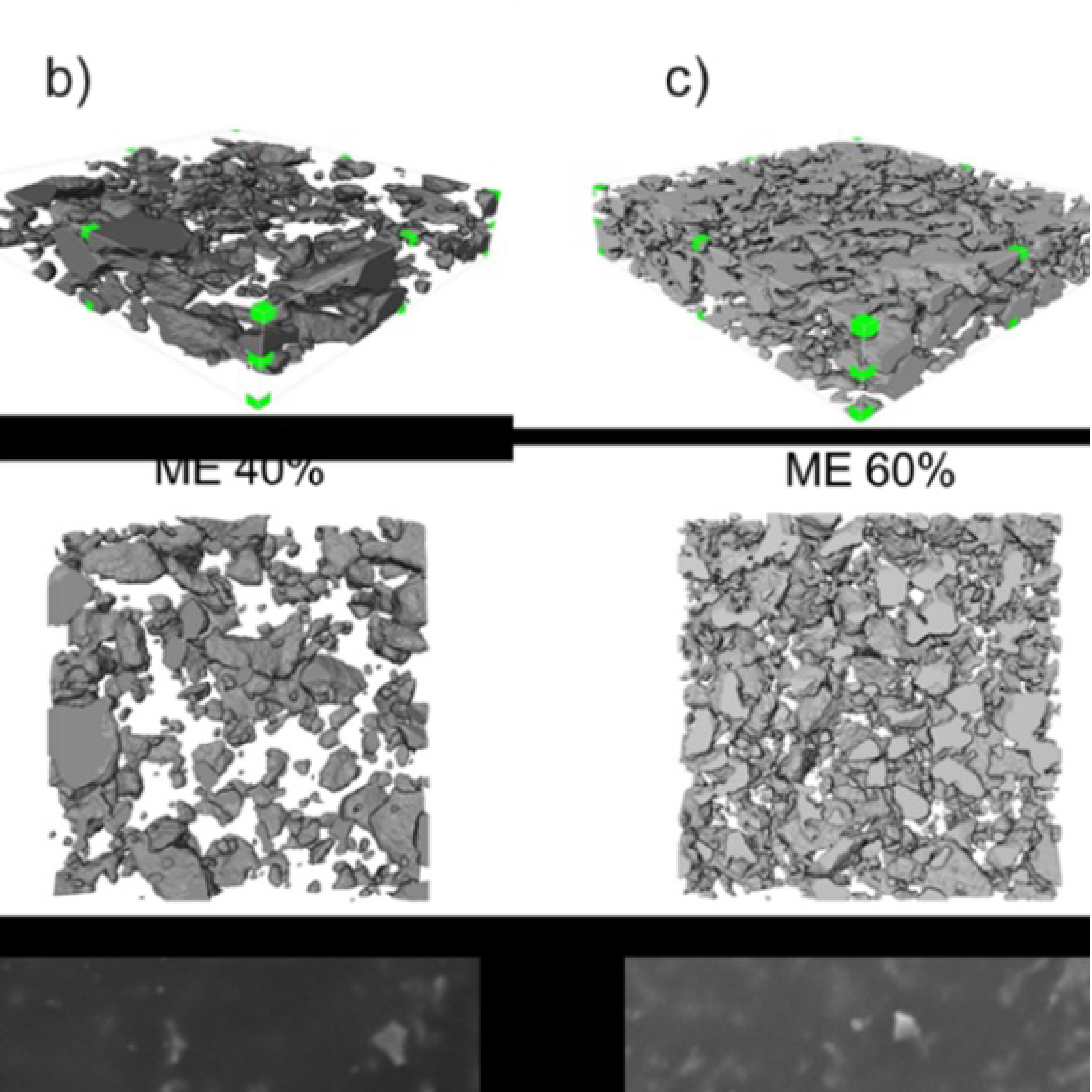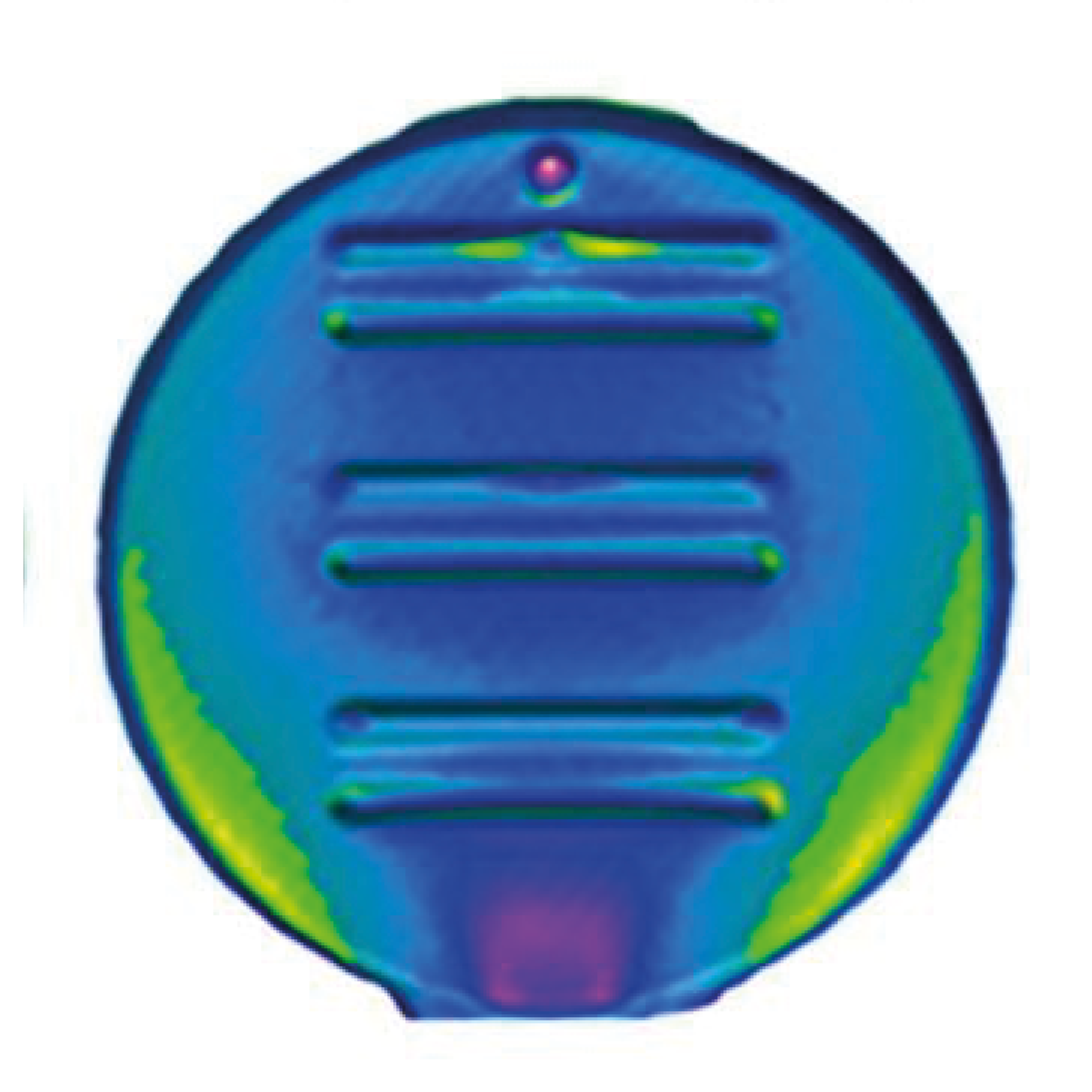
3D Microstructure of Soft Magnetic Elastomer Membrane
Soft magnetic elastomer membranes enable fast magnetic actuation under low fields. In our project, we… Read More
Events & Resources
News, Events and Resources from NXCT Partners
Soft magnetic elastomer membranes enable fast magnetic actuation under low fields. In our project, we developed micron-thick membranes which can be powered with high particle loading (70wt.%) with up to centimetre scale dimensions. This technology is well-suited to applications in nanoscale actuation and sensing, particularly in the field of biomedicine. X-ray micro-computed tomography was used in the characterisation of the membranes.
Smart robotic devices remotely powered by magnetic fields have shown promise as versatile tools for wide-ranging biomedical applications. This project focused on soft magnetic elastomer (ME) composite membranes, which have high flexibility and magnetic responsiveness, and are therefore well-suited to enable local actuation for wireless sensing or cargo delivery. However, fabricating micron-thick ME membranes with optimised parameters remains a challenge.
We have demonstrated a reproducible and controllable route to fabricate inexpensive, micron-scale thickness, centimetre-scale, ME membranes with high particle loadings (£70 wt.%) for magnetic actuation under low fields. Using a highly sensitive fibre-optic interferometric sensing system, the dynamic actuation of magnetically excited free-standing ME membranes was detectible at fields down to 2 mT, with nanometer accuracies, and demonstrated fast and consistent responses.
The NXCT facility at University College London was instrumental in enabling cutting-edge sensor characterisation through the free-at-the-point-of-access scheme, for the use of the ZEISS Xradia 620 Versa (ZEISS Microscopy). The expertise and assistance of Dr. Francesco Iacoviello (UCL Department of Chemical Engineering) were invaluable, enabling us to achieve structural characterization of ME membranes using Avizo 3D (Thermo Fisher Scientific) and ImageJ. 3D X-ray computed tomography enabled direct visualization of the internal morphology and structure of ME membranes and provided critical information about their uniformity and homogeneity, and the volume ratio of those two components as a comparative study with the published results.
With the support of the NXCT, a new non-destructive route towards characterising elastomeric composite coatings on optical fibres was established under ambient conditions. These methods also facilitated the development and optimisation of high-performance ME membranes for soft robotics that demonstrated strong potential for nanoscale actuation and sensing in biomedicine.
“With the support of the NXCT, a new non-destructive route towards characterising elastomeric composite coatings on optical fibres was established under ambient conditions. These methods also facilitated the development and optimisation of high-performance ME membranes for soft robotics that demonstrated strong potential for nanoscale actuation and sensing in biomedicine.”
Zhi Li
UCL Department of Medical Physics and Biomedical Engineering
Postdoctoral Research Associate

Soft magnetic elastomer membranes enable fast magnetic actuation under low fields. In our project, we… Read More

Nowadays, the increasing capability of micro-manufacturing processes enables the manufacture of miniature products with extremely… Read More

Injection of CO2 into shale reservoirs to enhance gas recovery and simultaneously sequester greenhouse… Read More